|
ID |
Nickname |
Country / City |
Languages |
Taxonomies |
Comment |
Project / Group |
Map |
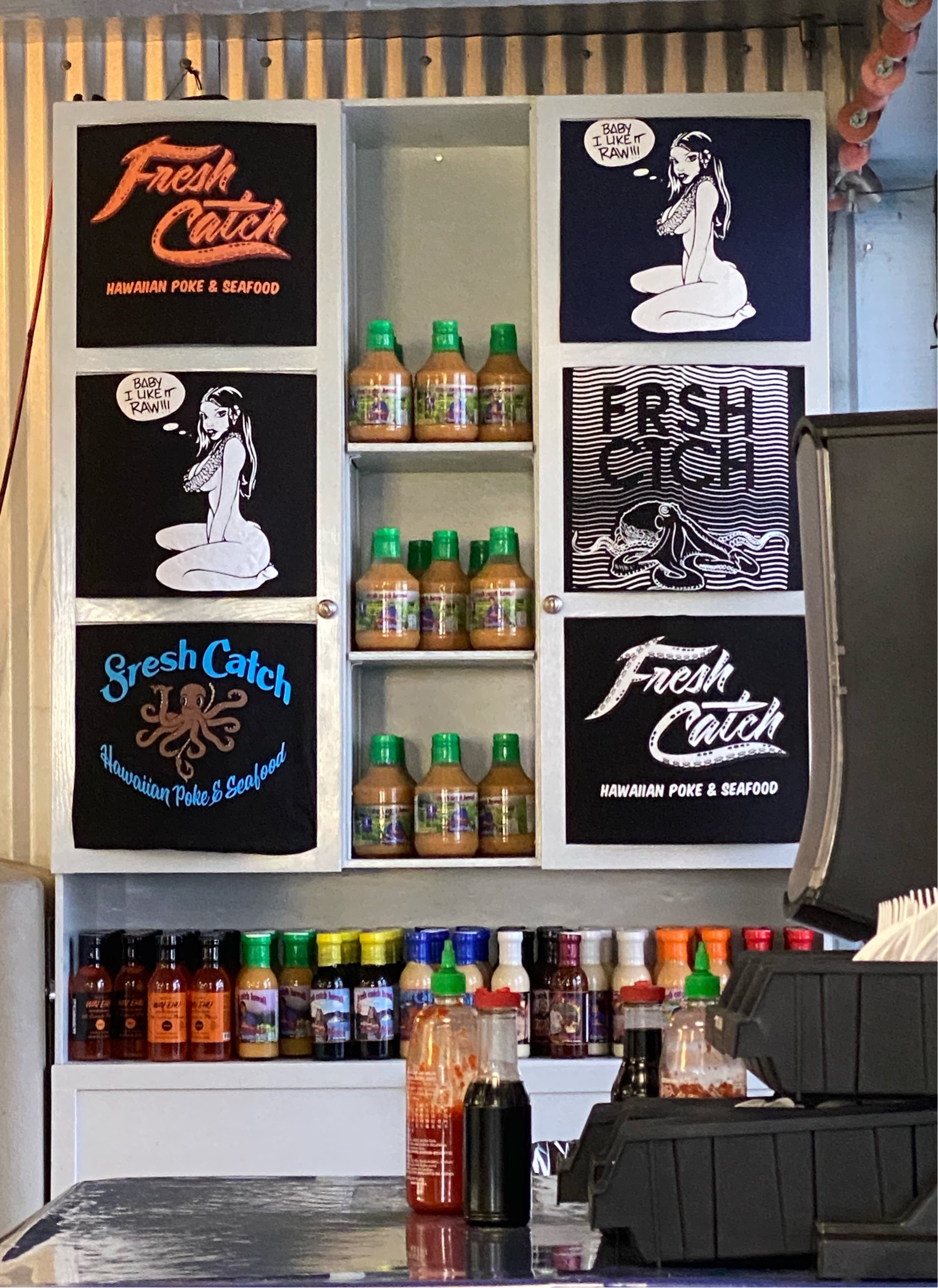
|
26838
|
|
United States
Honolulu
|
|
|
Is this Pidgin?
|
Multilingual Hawaiʻi
|
|
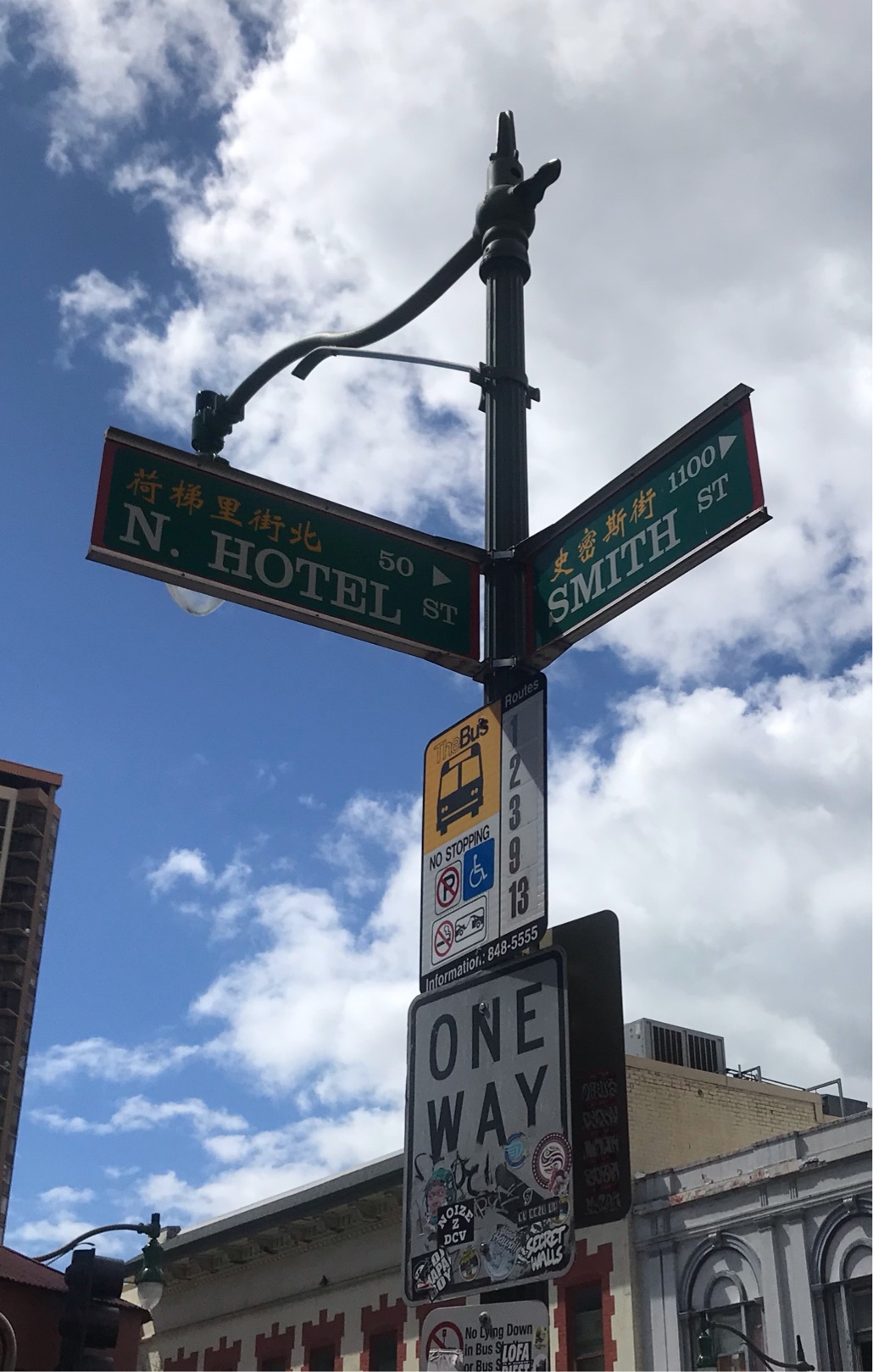
|
26839
|
|
United States
Honolulu
|
|
|
—
|
Multilingual Hawaiʻi
|
|
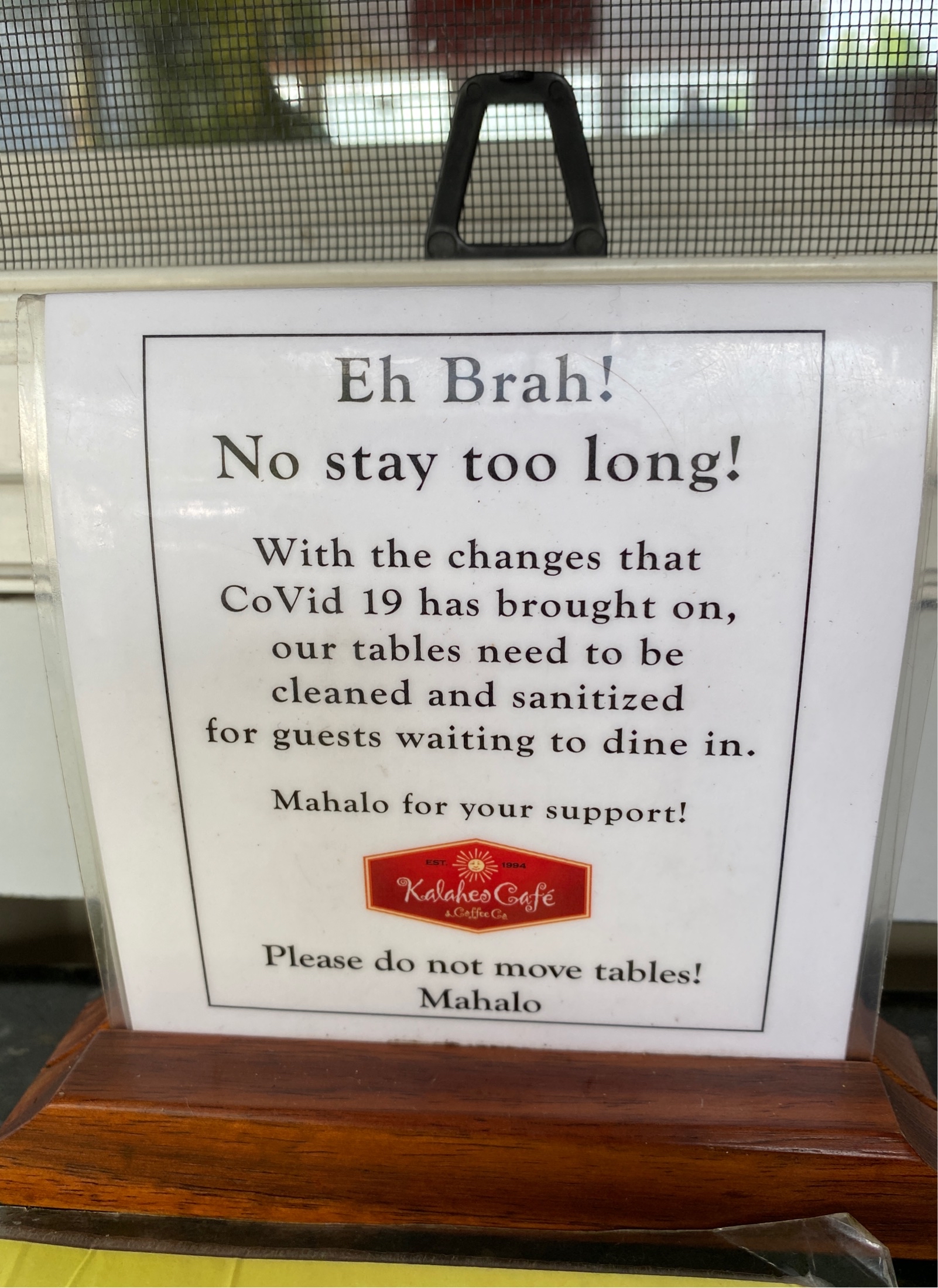
|
41175
|
|
United States
Kalaheo
|
|
|
“Eh brah! No stay too long!” Pidgin sign at all tables put in place asking patrons to be mindful of how long they spend due to the additional time it takes for staff to clean due to COVID19
|
Multilingual Hawaiʻi
|
|
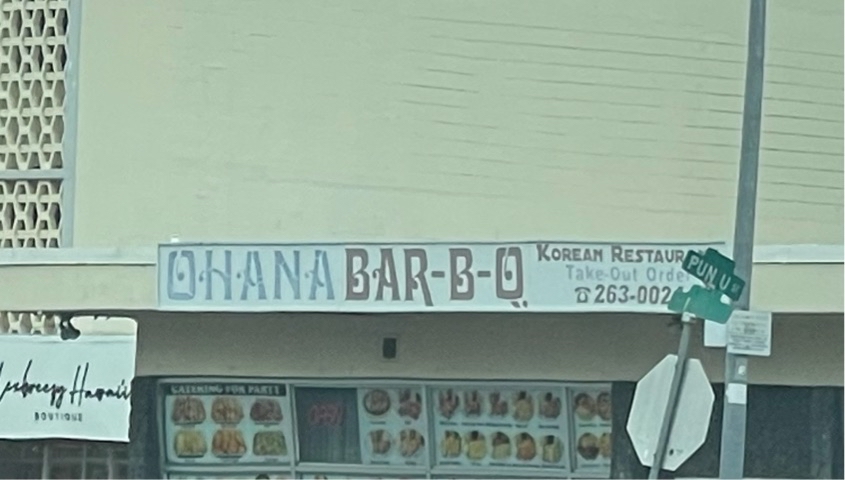
|
46039
|
|
United States
Kailua
|
|
|
SU: Check Up #2
- What languages are used on the sign?:
The languages that are used on the sign are Hawaiian & English.
- How are the languages presented?:
The Hawaiian word “Ohana” is presented in big, blue letters. The English words are presented in big and small, blue and red letters. The words “Ohana Bar-B-Q” are in big letter because that’s the name of the restaurant and the rest of the words are in a smaller font because it tells you what kind of restaurant this is and the phone number to call for a take out order.
- Who is the audience?:
The audience is the general public and could be for both locals and non-locals.
- What is the domain?:
The domain is a workplace and an eating place.
- What is the sign telling people?:
The sign is telling people that it is a Korean restaurant and since it says “Ohana Bar-B-Q”, “Ohana” means family so it might be a family owned Korean Bar-B-Q restaurant.
- Why is Hawaiian being used here?:
Hawaiian is being used here because it could easily catch the attention of the non-locals and locals alike.
|
Multilingual Hawaiʻi
|
|

|
26840
|
|
United States
Honolulu
|
|
|
Hawaiian lyrics on a glass elevator at the International Market Place.
|
Multilingual Hawaiʻi
|
|
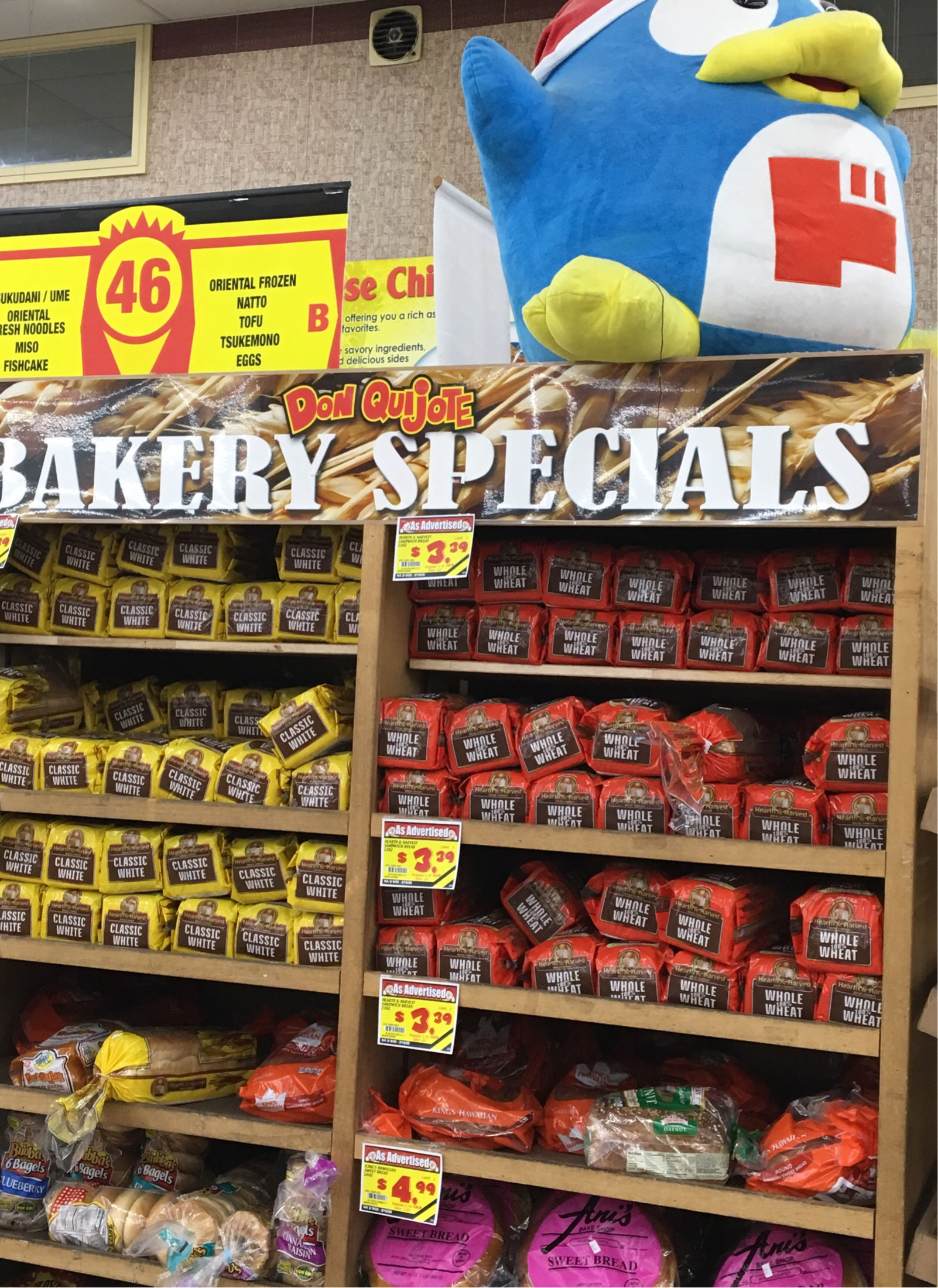
|
26841
|
|
United States
Honolulu
|
|
|
DnQ mascot
|
Multilingual Hawaiʻi
|
|

|
46046
|
|
United States
Kaneohe
|
|
|
SU: Check Up #2
- What language is used on the sign?:
The language that is used on the sign is Hawaiian.
- How is the language presented?:
The language is presented in big, white letters. I think it is presented in big letters in a color that stand out to show the power of the word and how important it is.
- Who is the audience?:
The audience is the general public but it is mainly for the locals.
- What is the domain?:
The domain is on the back of a car and used as a bumper sticker.
- What is the sign trying to tell people?:
The sign is trying to tell people that maybe this person is a parent. As the word “Kia’i” means a guardian or protector. One who has the kuleana or responsibilities of the protection and preservation of a person, please or thing.
- Why is Hawaiian being used here?:
Hawaiian is being used here it is appropriate for being on Hawaiian land but also because they might be Hawaiian.
|
Multilingual Hawaiʻi
|
|

|
44000
|
|
United States
Honolulu
|
|
|
It’s at a local Foodlands, Maikai means good and Shaka is a local hand sign. It’s used mainly for advertisement and attracting people to try foodland specific items. It’s a printed poster so it’s not really a permanent fixture.
NIP
|
Multilingual Hawaiʻi
|
|
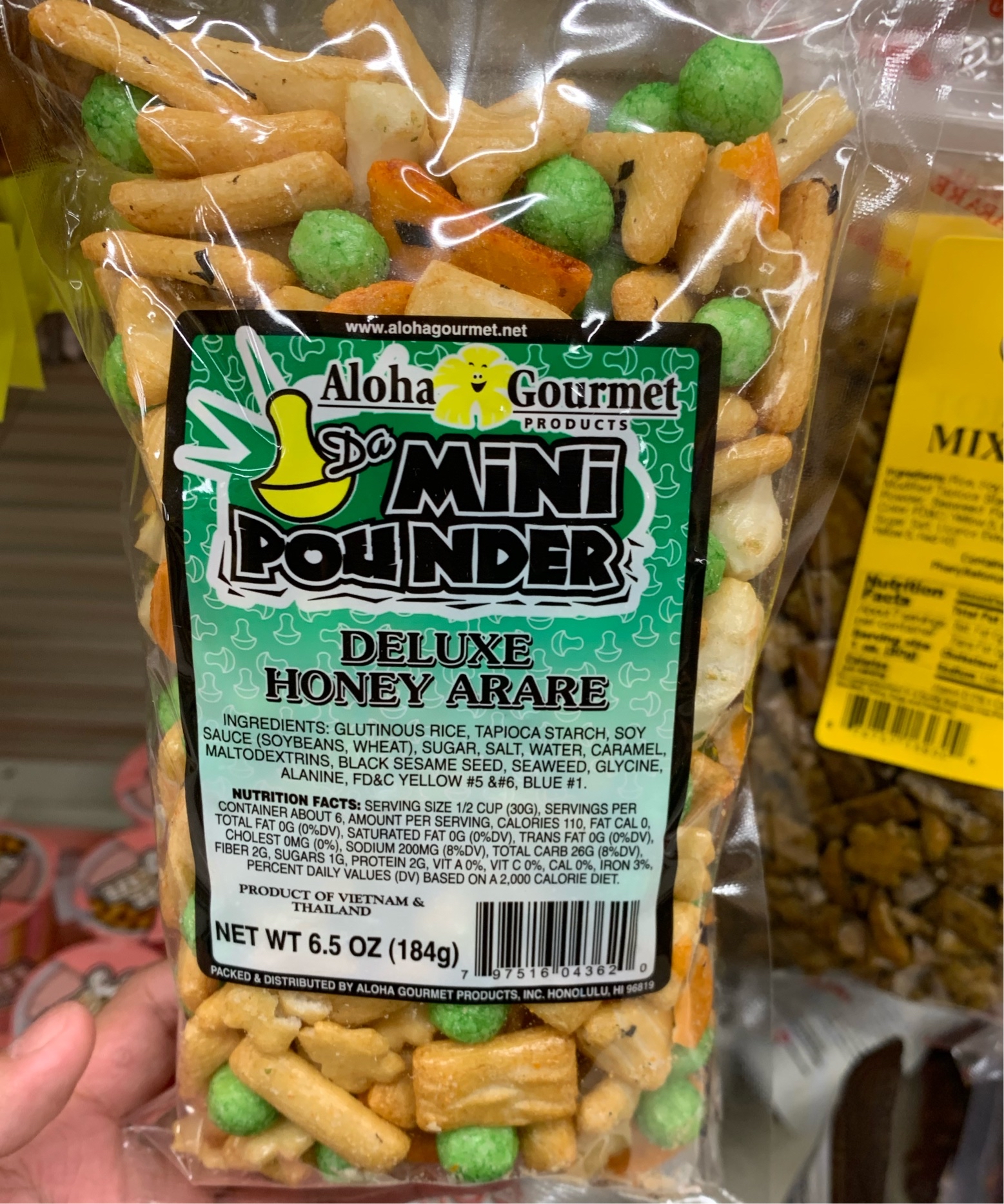
|
47072
|
|
United States
Honolulu
|
|
|
(SK) (#3) The domain of this photo is in the local Safeway near campus. “Da Mini Pounder” with the emphasis on “Da” is how the use of Pidgin is found. The intended audience of this product is anyone looking for some crackers and shopping in Safeway
|
Multilingual Hawaiʻi
|
|
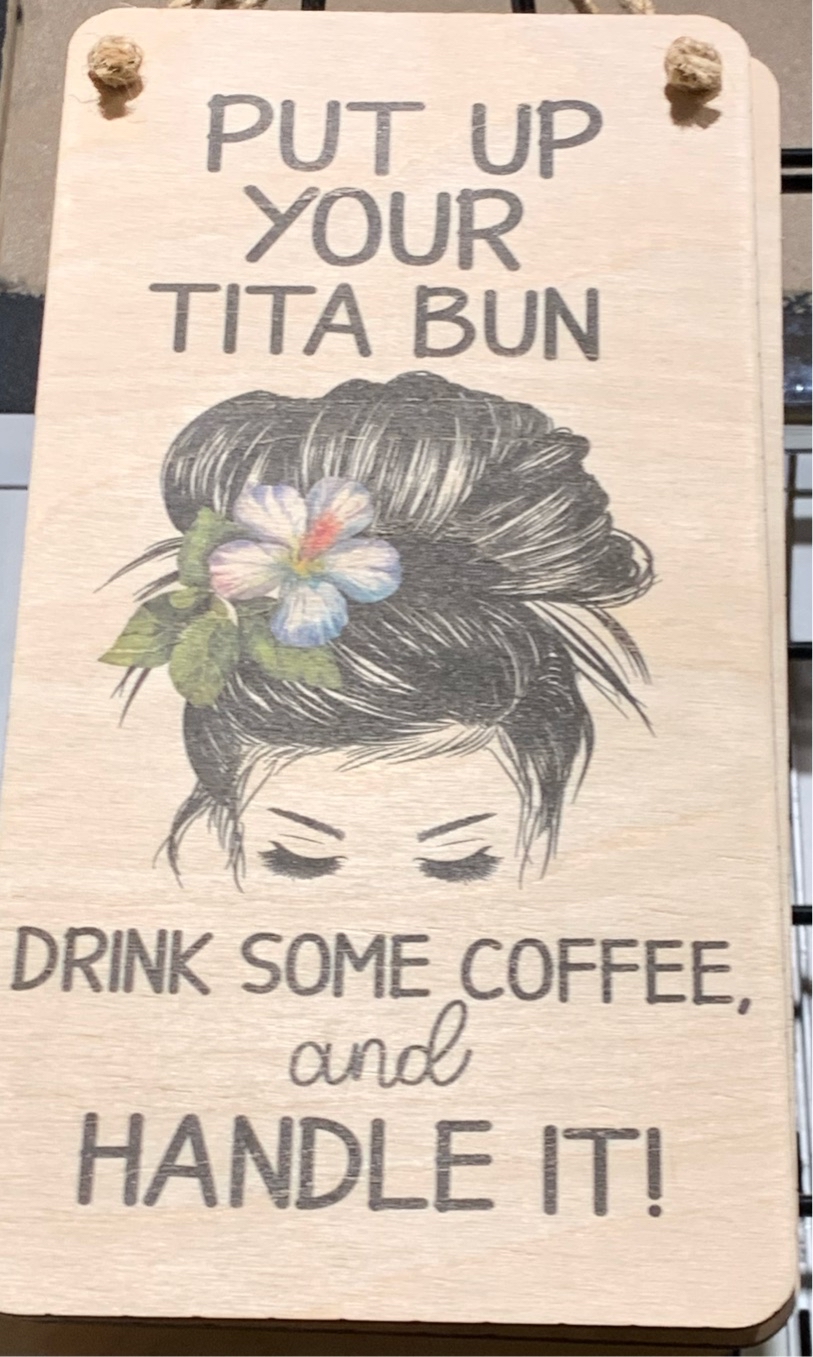
|
44001
|
|
United States
Aiea
|
|
|
This is an example of pidgin a “Titta bun” being a hairstyle for many local women. It’s printed onto a wooden plaque as a sellable object so it’s more a permanent decoration in someone’s house used to attract more local customers.
NIP
|
Multilingual Hawaiʻi
|
|

|
47073
|
|
United States
Haleiwa
|
|
|
(SK) (#3) The domain of this photo is located in the North Shore of Oahu, specifically in Haleiwa. Uncle Bo’s is a restaurant that is in the main center of Haleiwa. We can find the word “grindz” located on this happy hour menu. This is the use of Pidgin and the purpose is to make tourists feel like they are getting a local and Hawaiian experience. The target audience is those eating and dining at Uncle Bo’s during happy hour.
|
Multilingual Hawaiʻi
|
|
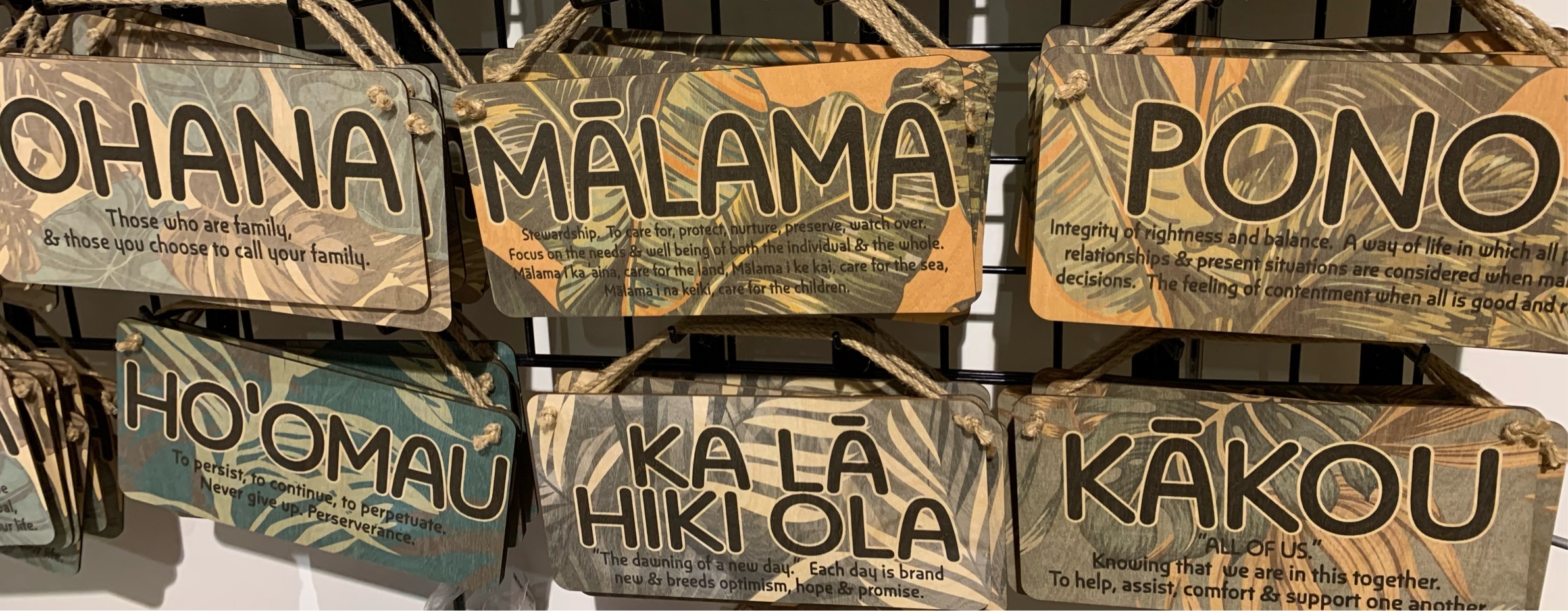
|
44002
|
|
United States
Aiea
|
|
|
This is an example of Hawaiian, giving many words that are pretty central to local/Hawaiian culture. It’s a painted plaque so probably a more permanent decoration. It’s probably an appealing item for both locals and tourists.
NIP
|
Multilingual Hawaiʻi
|
|
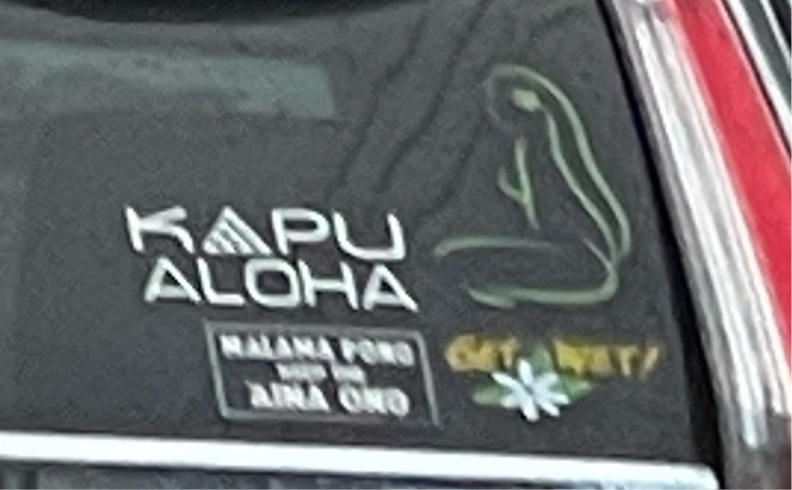
|
46050
|
|
United States
Kaneohe
|
|
|
SU: Check Up #2
- What language is used on the sign?:
The language that is used on the sign is Hawaiian.
- How are the language presented?:
The language is presented in big, thin, white letters.
- Who is the audience?:
The audience is the general public but it is mainly for locals.
- What is the domain?:
The domain is the back of a car used as a bumper sticker.
- What is sign telling people?:
The sign might be telling people to always live with aloha. Kapu Aloha honors the energy and life found in aloha - compassion - and helps us focus on its ultimate purpose and meaning.
- Why is Hawaiian being used here?:
Hawaiian is being used here to catch the attention of the locals. To send out the message, especially to them, that it is important to live with aloha anywhere and everywhere.
|
Multilingual Hawaiʻi
|
|

|
47074
|
|
United States
Kaneohe
|
|
|
SU: Check Up #3
- What languages are used on the sign?:
The languages that are used on the sign is Hawai’i Creole or Pidgin, Filipino, and English.
- How is the language presented?:
All languages are presented in all white but Hawai’i Creole is presented in smaller bolded letters, Filipino is presented in bigger bolded letters, and English is presented in skinny letters.
- Who is the audience?:
The audience is the general public, but would probably be more directed towards locals.
- What is the domain?:
The domain is on the side of a dessert store in a public mall.
- What is the sign telling people?:
The sign is telling people that this is THE ice cream place, as halo halo is a Filipino dessert that involves ice cream.
- Why is Pidgin/Hawaiian being used here?:
Pidgin is being used here because it is a clever way to catch the attention of people who walk by this sign, especially ones who are locals.
|
Multilingual Hawaiʻi
|
|

|
147939
|
catherine
|
United States
Honolulu
|
|
|
While I was driving on Kapiolani Blvd, getting ready to turn onto Atkinson, I noticed this Korean restaurant, Chogajip, with its name written in English and “초가집” written next to it. After searching up what this means, I found that it says “thatched house,” which refers to a traditional Korean home. I found this interesting because it’s not only multicultural, but it’s also something only someone proficient in Korean would understand. The only English on the sign is “Korean Restaurant and Bar,” while the Korean wording conveys a homelike taste and environment. Seeing this bilingual signage sending different messages to different audiences shows how openly multicultural Hawaiʻi is.
|
Multilingual Hawaiʻi
|
|
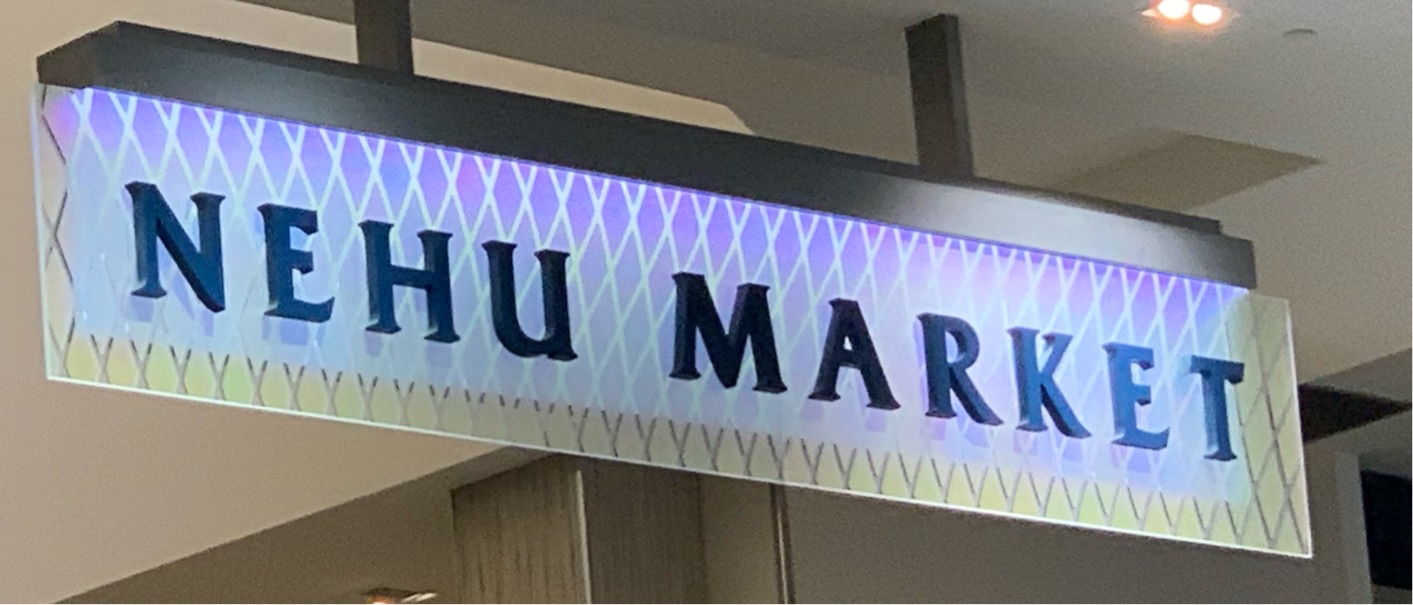
|
44003
|
|
United States
Aiea
|
|
|
This is an example of Hawaiian. It’s a sign of metal made letters so it’s a permanent placement. It means small anchovy which fits for the small food court at the top of Pearl ridge downtown side. It’s probably just good decoration and metaphor for the area appealing to both locals and tourists.
NIP
|
Multilingual Hawaiʻi
|
|

|
47075
|
|
United States
Honolulu
|
|
|
(SK) (#3) This sign is located on campus in the Life Sciences building. The Hawaiian word for woman is exhibited on the sign which is “Wahine.” Hawaiian is found here because it again is used in an attempt to familiarize/normalize the language on campus. Anyone would be able to know what the sign means without knowing the language because of context and already knowing that that symbol means woman. The intended audience of this is anyone looking to use the bathrooms.
|
Multilingual Hawaiʻi
|
|
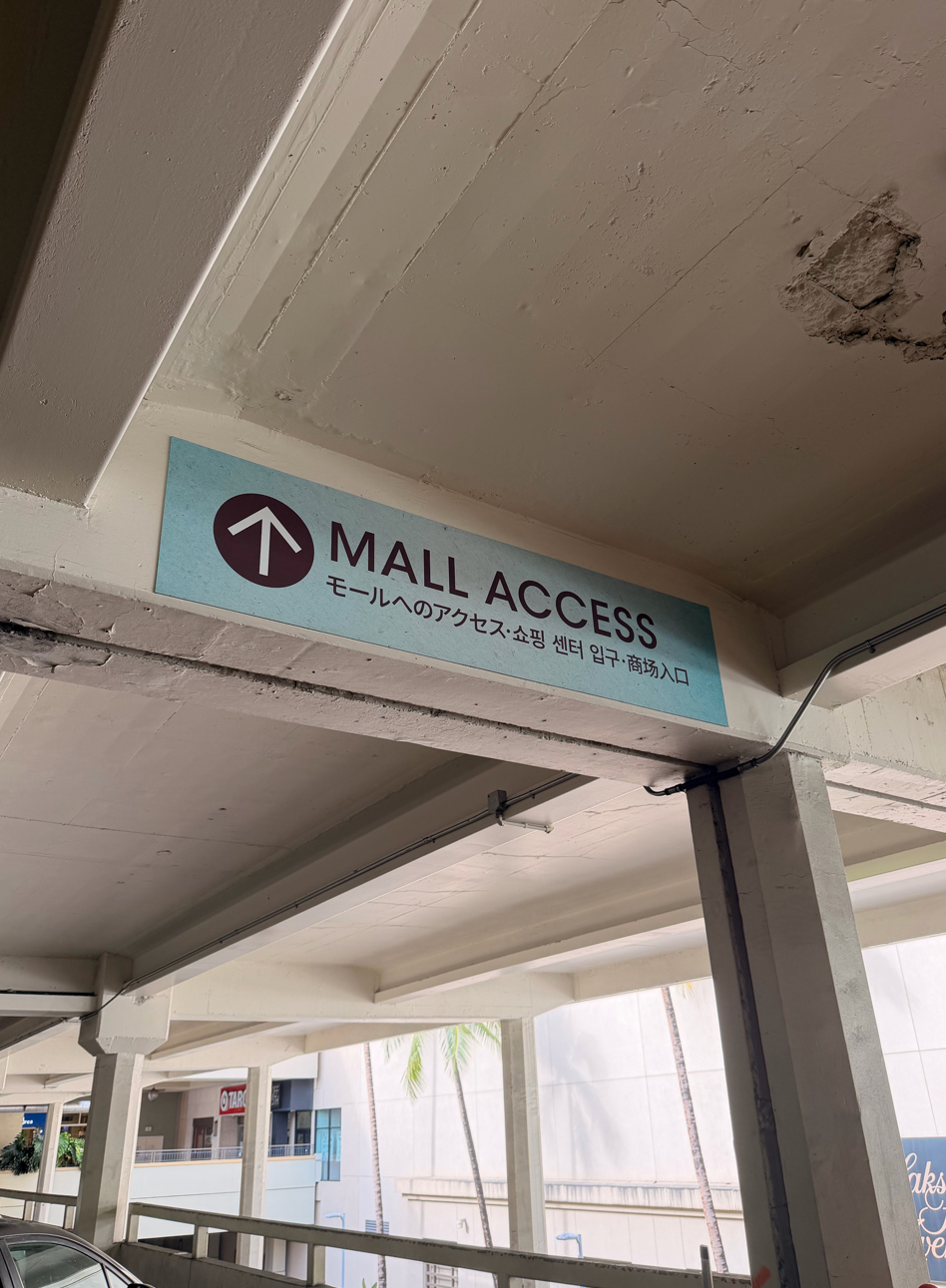
|
147940
|
catherine
|
United States
Honolulu
|
|
|
While I was driving through the Ala Moana parking lot on the main level next to Target, it was the first time I noticed this “Mall Access” sign, even though I’ve driven past it many times. It caught my attention because the sign is in English, Japanese, Korean, and Chinese. Since this sign is in an older wing of the mall, it’s probably been here for many years without me noticing, which shows how long Hawai‘i has been a multicultural environment. Although Ala Moana is a touristy place, it was still interesting to see such a general sign in four languages. The Japanese, Korean, and Chinese all translate to “Mall Access.” Seeing multiple languages layered into a simple directional sign made me realize how deeply multilingualism is built into Hawai‘i’s public spaces, even in areas we overlook.
|
Multilingual Hawaiʻi
|
|
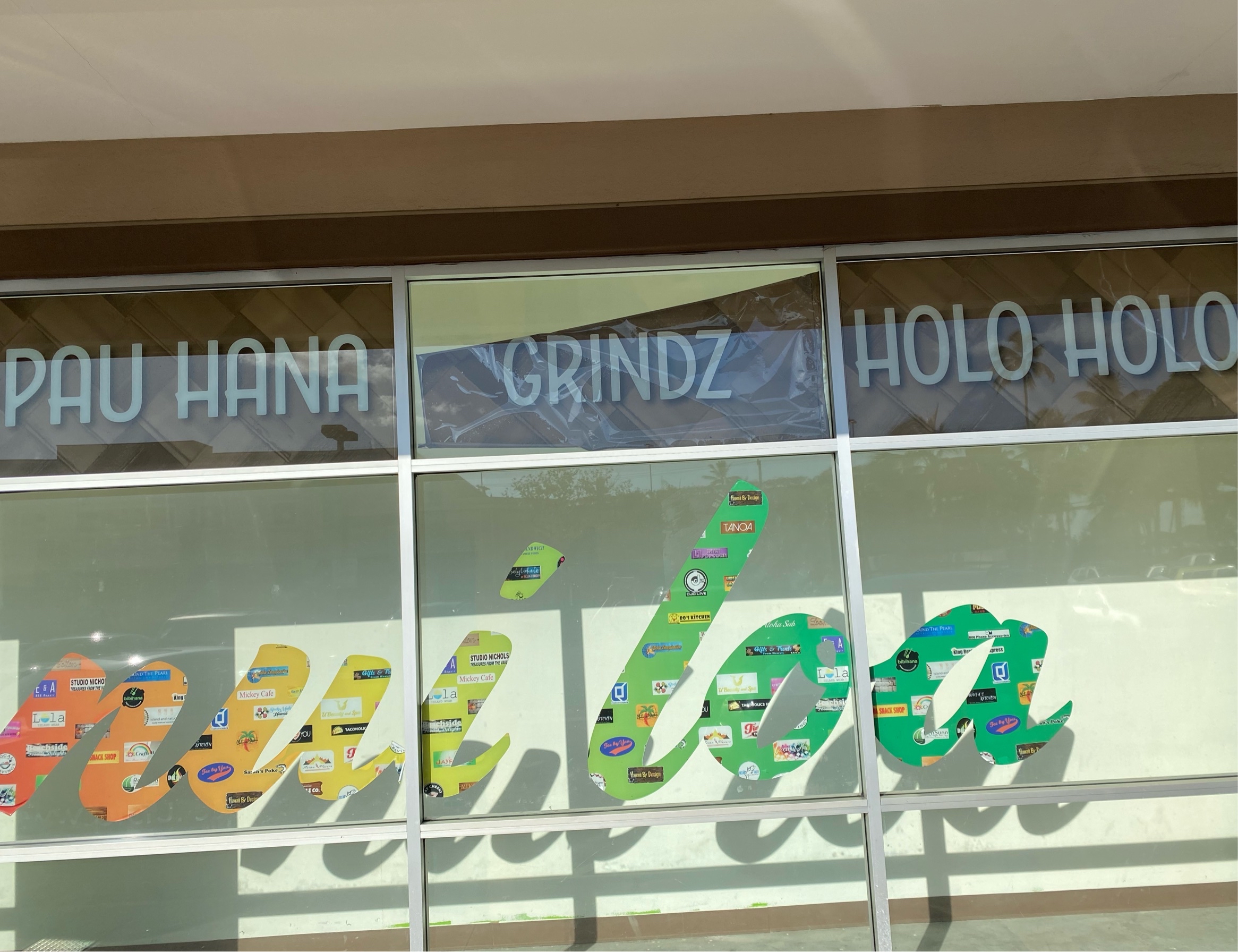
|
38372
|
|
United States
Honolulu
|
|
|
—
|
Multilingual Hawaiʻi
|
|
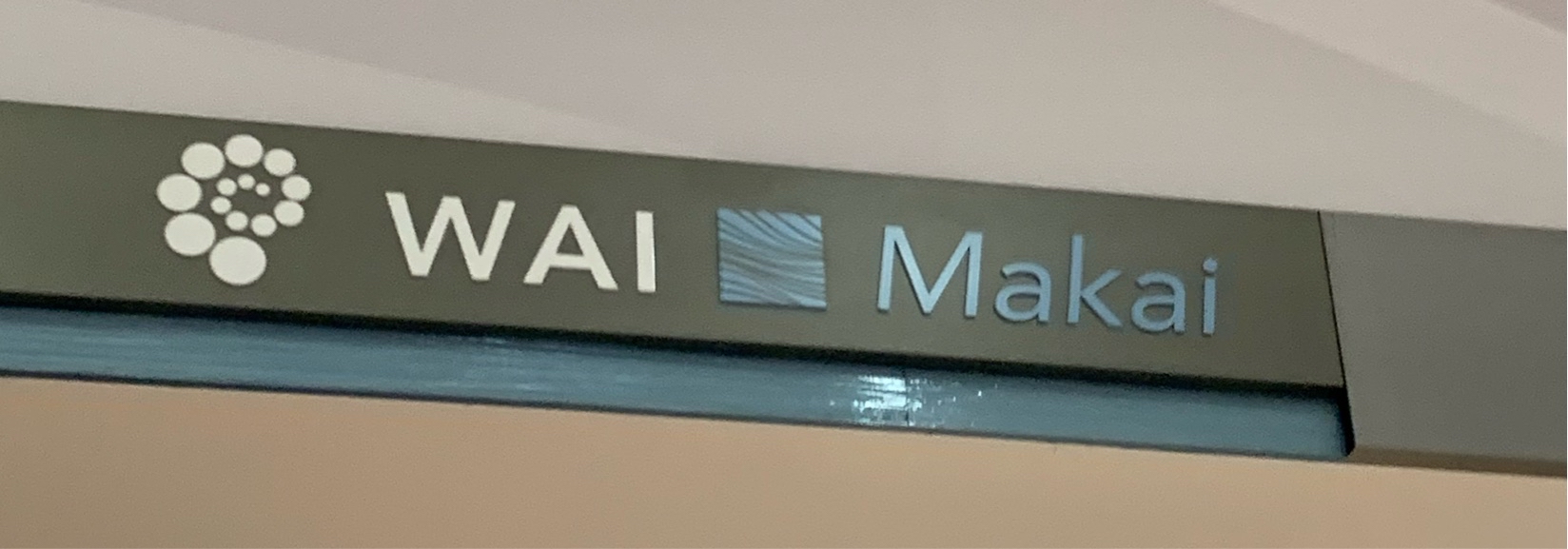
|
44004
|
|
United States
Aiea
|
|
|
This is an example of Hawaiian. It’s a metal sign so it’s a more permanent fixture. Wai means water, makai means towards the ocean, that’s why the sign is blue with a wave picture. It appeals to both tourists and locals for direction and learning.
NIP
|
Multilingual Hawaiʻi
|
|